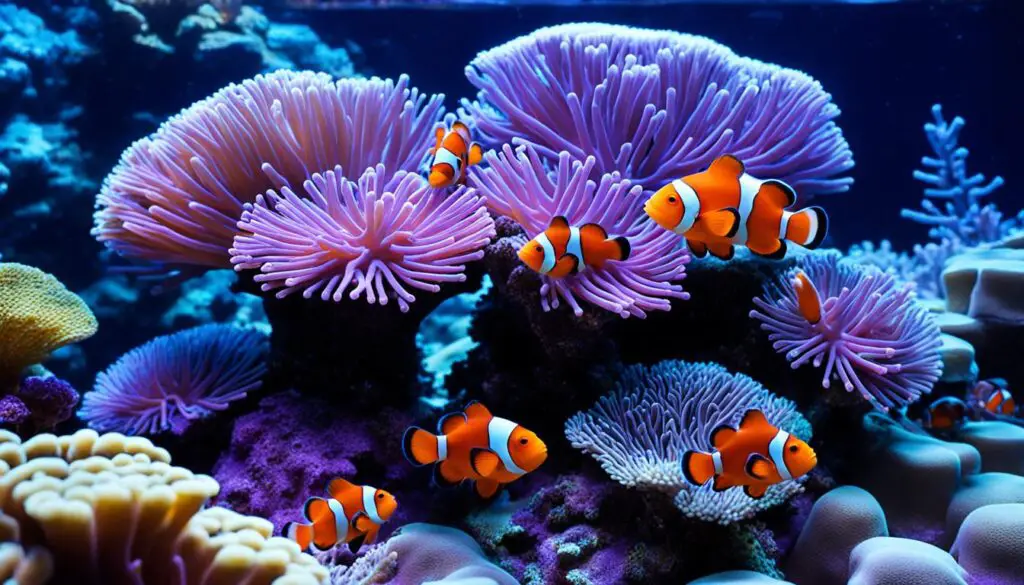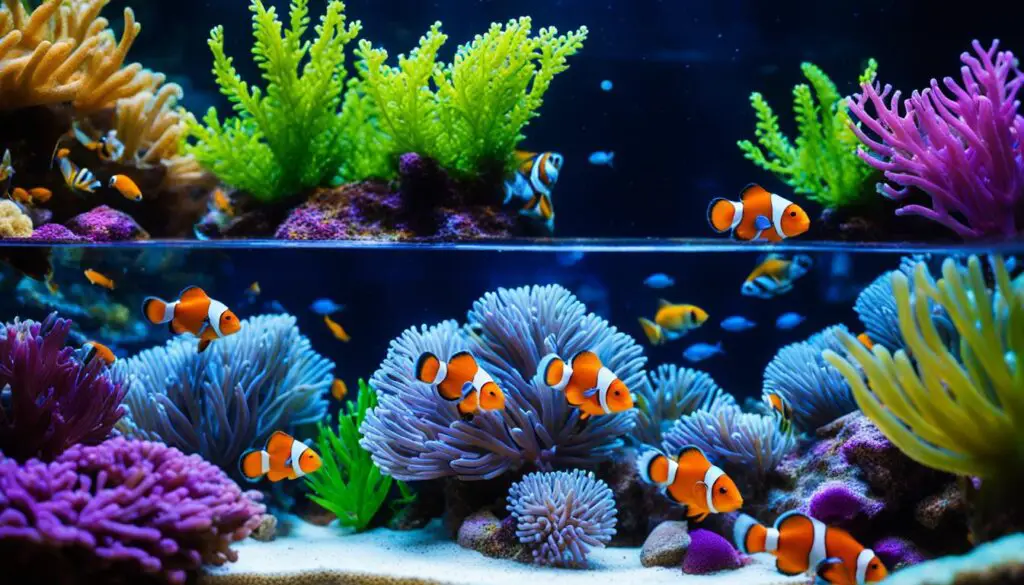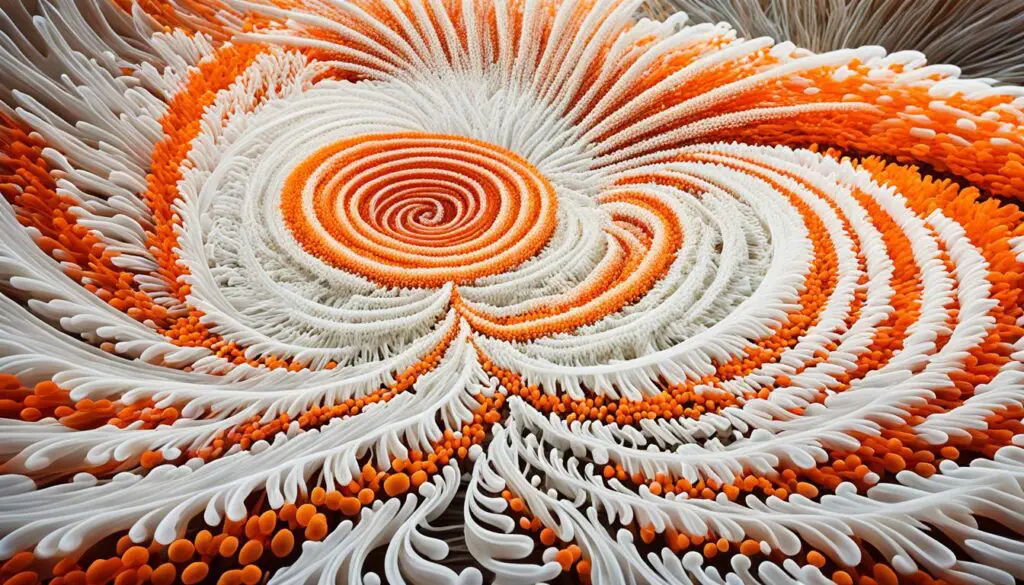The Magical Relationship Between Clownfish and Anemone
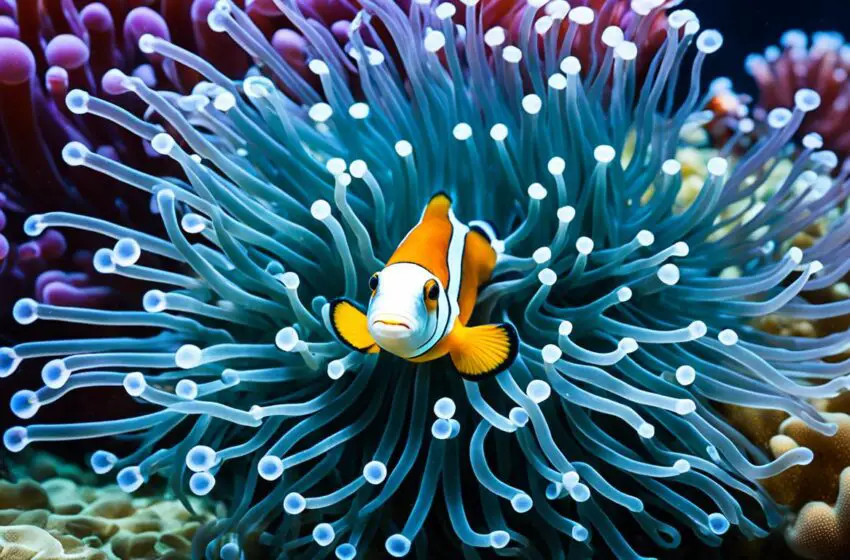
Clownfish and anemones have a special relationship. Clownfish need anemones for protection in the wild. Even in tanks, people like to see them together, mimicking their natural bond.
The kind of anemone is key to hosting clownfish. In the wild, certain ones like the Magnificent Sea Anemone take in Ocellaris and Perculas clownfish. The Bubble Tip Anemone is a great choice for those who keep aquariums. It’s easy to look after and comes in many colors, hosting these clownfish well.
To keep the anemone content, a clean and stable aquarium is a must. It needs proper filtration, water flow, and strong light. It must also be fed, but if the clownfish live with it, it usually gets enough food.
Key Takeaways:
- Clownfish depend on anemones for protection from predators.
- The type of anemone is crucial for successfully creating a home for clownfish.
- The Bubble Tip Anemone is well-liked for its ease of maintenance and its attractiveness to both Ocellaris and Perculas clownfish.
- Regularly maintaining a clean aquarium with suitable living conditions is vital for the anemone’s health.
- With clownfish around, anemones usually do not need extra feed.
How to Get Your Clownfish to Host an Anemone
Getting your clownfish to live in an anemone can be tough. It takes time for them to feel safe near it. How long this takes varies, with some needing just days to accept it. Others might take a lot longer or even never like the anemone at all.
Some suggest showing your fish pictures of other clownfish in anemones. But, from what I’ve seen, the best way is for the fish to discover the anemone itself.
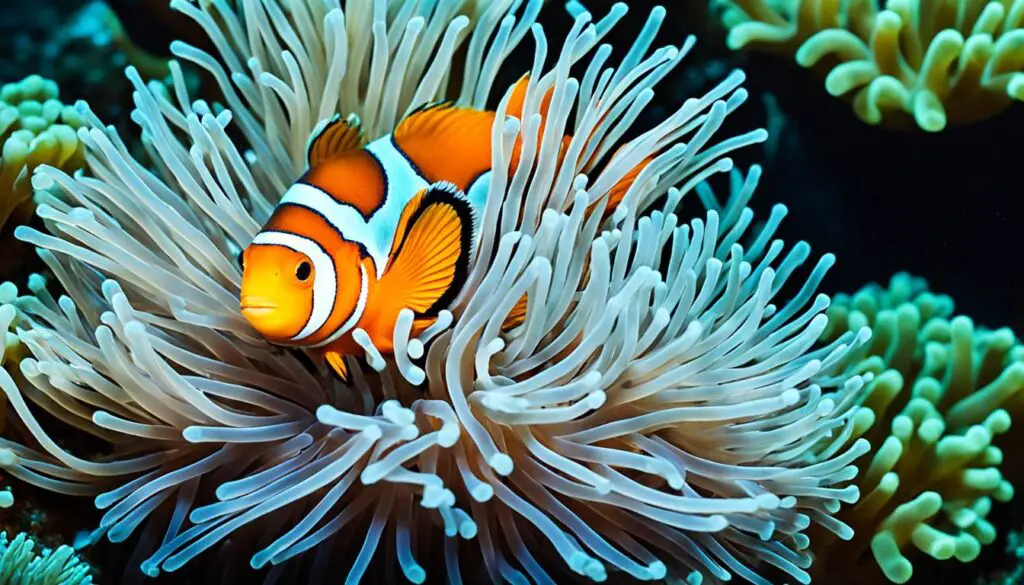
Here’s an easy way to encourage your clownfish to host an anemone. Put the anemone and clownfish in a small space for a bit. Try putting the anemone on a rock in a bit of water. Slowly add the clownfish. They’ll get used to each other. This increases the chance that your fish will like the anemone.
It’s important to be patient. Let the fish check out the anemone on their own. Don’t push them towards it or hurry. The fish needs to feel safe all the time.
Always watch how the clownfish is acting. If they look upset or mean, separate them right away to keep them safe.
Follow this approach and your chances of having a hosted anemone go up. Every fish is different, so it might take more time with some. Be patient. Over time, your clownfish should get along well with its anemone.
Tips for Hosting Clownfish:
- Choose a good anemone type, like the Bubble Tip Anemone (Entacmaea quadricolor)
- Keep the tank clean and steady
- Make sure your water is filtered well and moves a lot
- Use bright lights for the anemone
- Feeding should be regular for the anemone, but make sure you don’t feed too much
By using these tips, you can improve your clownfish’s chance of liking an anemone. Be patient, watch how they’re doing, and make their habitat just right. This will help their partnership with the anemone to be healthy.
Conclusion
The special bond between clownfish and anemones is truly amazing. They don’t need each other to live, but many fans try to make their tank homes look like the ocean. They pick the right anemone – often the Bubble Tip Anemone – to keep the clownfish safe. Taking good care of the anemone is key, like giving it enough to eat, keeping the tank clean, and providing bright light.
Making clownfish live in an anemone can take a while. But there are tricks to help this along. Putting them in a small space together for a bit makes the clownfish want to check it out. It’s important to watch them to make sure they’re ok, but this can help them live together happily.
When the clownfish and anemone get along, it’s a beautiful thing to see. It shows nature’s amazing teamwork and the deep ties in the ocean. With care and a few smart moves, we can watch these sea creatures peacefully share a home, right in our own aquarium.
FAQ
What is the significance of anemones for clownfish?
Anemones protect clownfish from their enemies in the ocean. They offer safety, making them important for the fish. Even in aquariums, people try to provide this natural shield for their clownfish.
Which types of anemones can host Ocellaris and Perculas clownfish?
Anemones like the Magnificent Sea Anemone and the Giant Carpet Anemone are ideal for Ocellaris and Perculas in nature. Yet, some species are too big or hard to keep for most hobbyists.
What is a common choice of anemone for clownfish in captive reefs?
The Bubble Tip Anemone, mainly the Entacmaea quadricolor, is favored in home aquariums. This type is easy to keep, colorful, and suits many clownfish, including Ocellaris and Perculas.
What care does an anemone require to keep it happy?
To keep anemones content, a tank should be clean, stable, and well-lit. Proper filtration and water movement are essential. They also eat, but if clownfish live with them, that may be enough food.
How can I get my clownfish to host an anemone?
Encouraging clownfish to host an anemone needs patience. You can try showing them visual examples, or put them close together for a bit. But, it may still take some time.
How long does it take for clownfish to host an anemone?
The time it takes for clownfish to adopt an anemone varies. For some, just a few days is enough. Others might take much longer, and some might not ever host.

